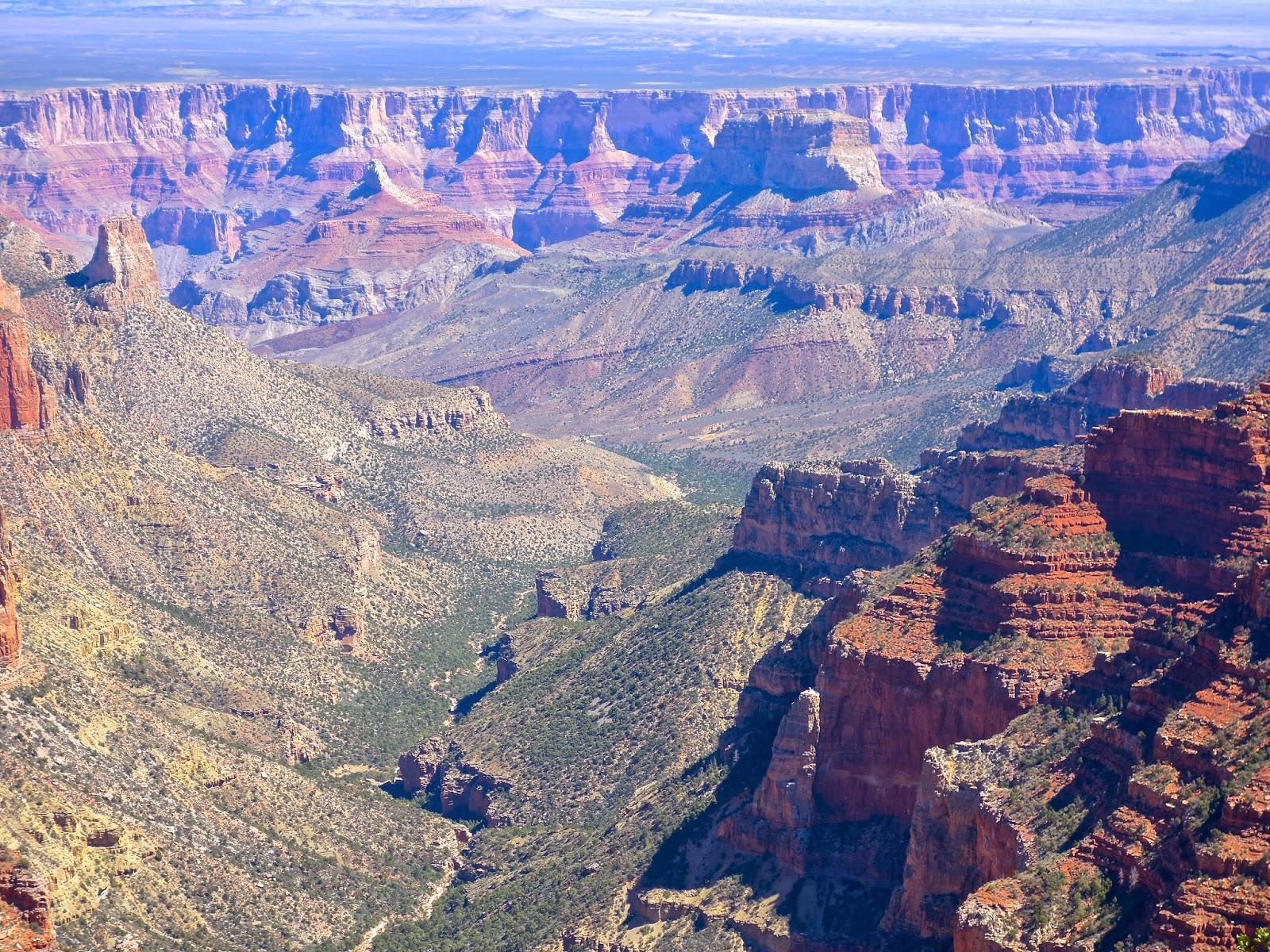 Dinner at the "Swingin' Steak" was a first for us. Meats are barbecued over an open wood fire on a gimbaled grill which moves the steak into the flame then out, searing and browning it without burning the meat.
Dinner at the "Swingin' Steak" was a first for us. Meats are barbecued over an open wood fire on a gimbaled grill which moves the steak into the flame then out, searing and browning it without burning the meat. The salad and steak floated atop a gooey mess of refried beans, coating the greens with bean goo as well as salad dressing, and warming the cool salad as well. The steak was OK, however.
The outdoor patio was warm and was visited by flies quite frequently. John, the hublet, was underwhelmed, though the recommendation was sincerely made by our Navajo guide in Monument Valley.
Beside Mexican Hat flowed the muddy, army-green, rocky San Juan River.
Depending on upstream flash floods, the river is "red" or "green" - one tributary empties Chinle Wash with its Halgaito shale deposits. McElmo Canyon has Mancos shale, and is the source of heavy green sedimentation.
Leaving Mexican Hat we viewed the amusing balanced rock which gave the town its name.
 |
| web photo |
I chose to take Highway 261, not noticing a small area of road marked Moki Dugout. This turned out to be a gravel-dirt road cut out from the side of the steep mesa. Built by a uranium mining company in 1958, Utah has not seen fit to improve this highway. The weather was good our Jeep sturdily climbed the hill, conducted with aplomb by hublet John.
In Goosenecks State Park, we saw one of the world's finest examples of an entrenched river meander. An upward shift of the rock beds caused a rapid incision of the river into the sandstone with a symmetrical path. The riverbed lies in a 1,000 foot deep gorge, and the one meander area measures 6 miles long in a 1 ½ mile direct measure.
Rocks exposed here are 300 million years old, dating to the Pennsylvanian Period.
 |
| satellite photo - Goosenecks State Park |
.jpg)
The landscape is gray and sandy, dull, and wrinkled like the tough hides of elephants or dinosaurs. Open, open, I feel my mind stretching to know time and events here.
We zip across the desktop of Cedar Mesa, and quickly come to Natural Bridges State Park. Here the rock is warm cream and sienna, and it is astonishing - my first view of a rock bridge I've wanted to see for so long.
 |
| Sipapu Bridge |
The road has been lain for car touring, and I'm so grateful. My husband cannot walk well anymore and views he can no longer earn on foot are still offered to us, courtesy of an environmental access philosophy that is more generous than Edward Abbey's.
 |
| Owachomo Bridge - means rock mound in the Hopi language |
 |
| diagram of Rainbow Bridge erosion process |
This bridge is staunch, wide and high, and I hiked down to stand beneath it and marvel at its span and the wonderful empty space beneath it. There is still a river moving through this canyon, too, adding freshness and a sense of current time to this seemingly timeless place.
Like a child, I was curious to stand beneath the bridge and gaze up at its span, so like and yet so not of the mechanical wonders that span the world's rivers and bays. Desert varnish stripped the sides of the span, making the bridge look like a sienna-colored lizard.
Beneath the span and beyond lay a tumble of riverbed, boulders, and willows, angled silted rock slabs canted against each other, disorienting me slightly, yet delighting me, alone beneath this hallowed place.
My worries about John's boredom while I hike are alleviated when I come back up the trail and find him chatting with another traveler who isn't hiking anymore, but waiting for his friends below. He's good at this, chatting up people, and enjoys it.









.jpg)







































